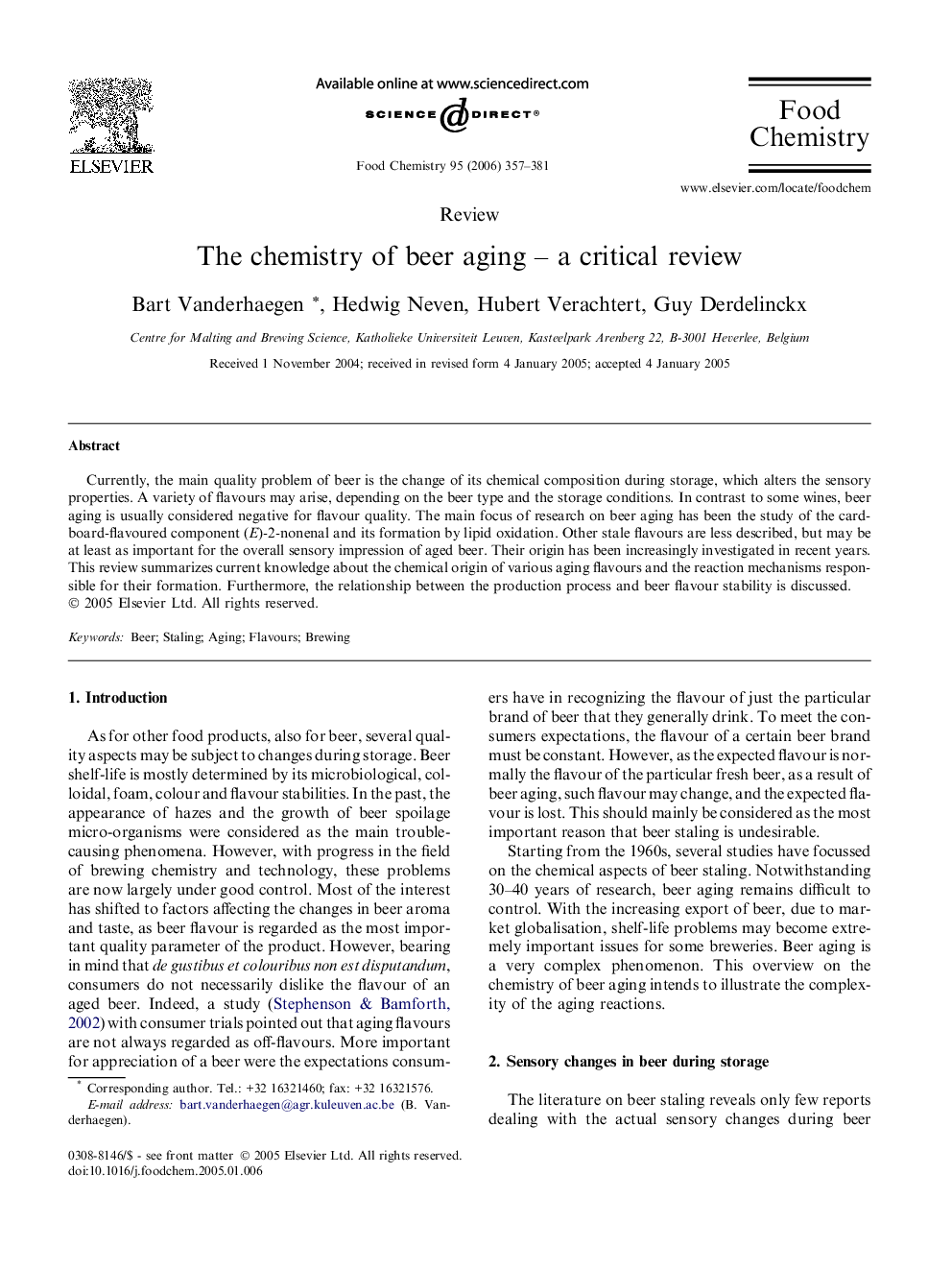| Article ID | Journal | Published Year | Pages | File Type |
|---|---|---|---|---|
| 1189359 | Food Chemistry | 2006 | 25 Pages |
Currently, the main quality problem of beer is the change of its chemical composition during storage, which alters the sensory properties. A variety of flavours may arise, depending on the beer type and the storage conditions. In contrast to some wines, beer aging is usually considered negative for flavour quality. The main focus of research on beer aging has been the study of the cardboard-flavoured component (E)-2-nonenal and its formation by lipid oxidation. Other stale flavours are less described, but may be at least as important for the overall sensory impression of aged beer. Their origin has been increasingly investigated in recent years. This review summarizes current knowledge about the chemical origin of various aging flavours and the reaction mechanisms responsible for their formation. Furthermore, the relationship between the production process and beer flavour stability is discussed.
